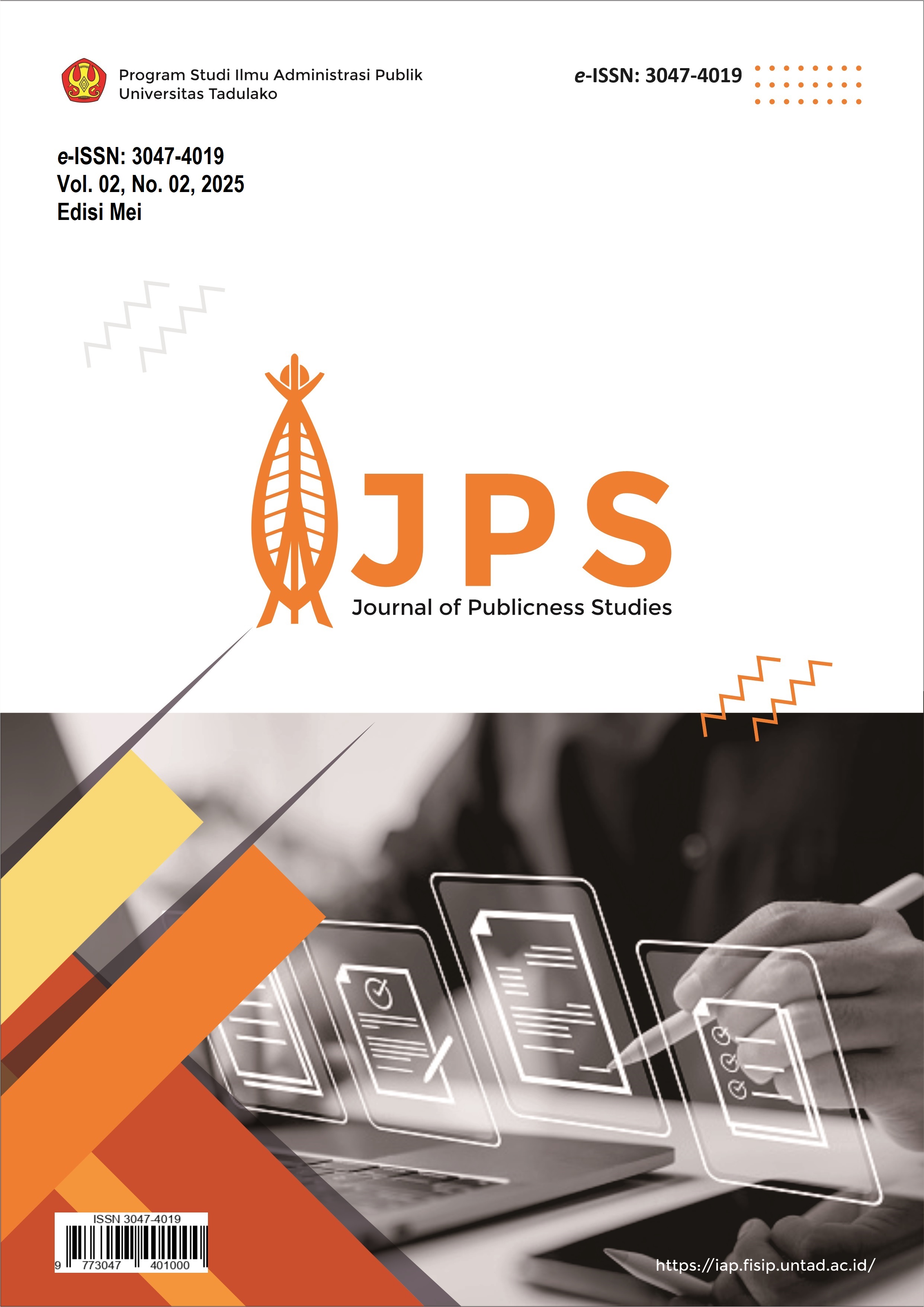Efektifitas Penerapan Sistem Electronic Traffic Law Enforcement Di Kota Palu
##plugins.themes.academic_pro.article.main##
Abstrak
Penelitian ini bertujuan untuk mengetahui bagaimana Efektifitas Penerapan Sistem Electronic Traffic Law Enforcement di Kota Palu. Dasar penerapan ini menggunakan dasar penelitian kualitatif dengan pendekatan deskriptif, sedangkan teknik pengumpulan data dilakukan dengan observasi, wawancara,dan dokumentasi.data yang digunakan dalam penelitian ini berupa data prima dan data sekunder. Penetapan informan dalam penelitian ini menggunakan purposive dengan menetapkan 4 (orang) informan. Analisis data pada penelitian ini yaitu pengumpulan data (data collection), kondensasi data (Condensation data), penyajian data (display data), dan penarikan kesimpulan. Adapun teori yang digunakan dalam penelitian ini yaitu teori oleh Duncan, terdapat 3 aspek yang perlu di perhatikan yaitu 1) pencapaian Tujuan, 2) Integrasi, 3) Adaptasi. Berdasarkan hasil penelitian yang diperoleh dapat di simpulkan bahwa faktor yang menyebabkan belum maksimalnya penerapan tilang elektronik di kota palu yaitu masih kurangnya kesadaran masyarakat terhadap adanya tilang elektronik karena masih banyaknya terjadi pelanggaran lalu lintas di lokasi- lokasi terpasangnya kamera ETLE, selain itu masih kurangnya anggaran dalam penerapannya sehingga masih banyak lokasi rawan terjadinya pelanggaran lalulintas yang belum terpasang kamera ETLE sehingga masih banyak terjadinya pelanggaran-pelanggaran lalulintas di kota palu.

